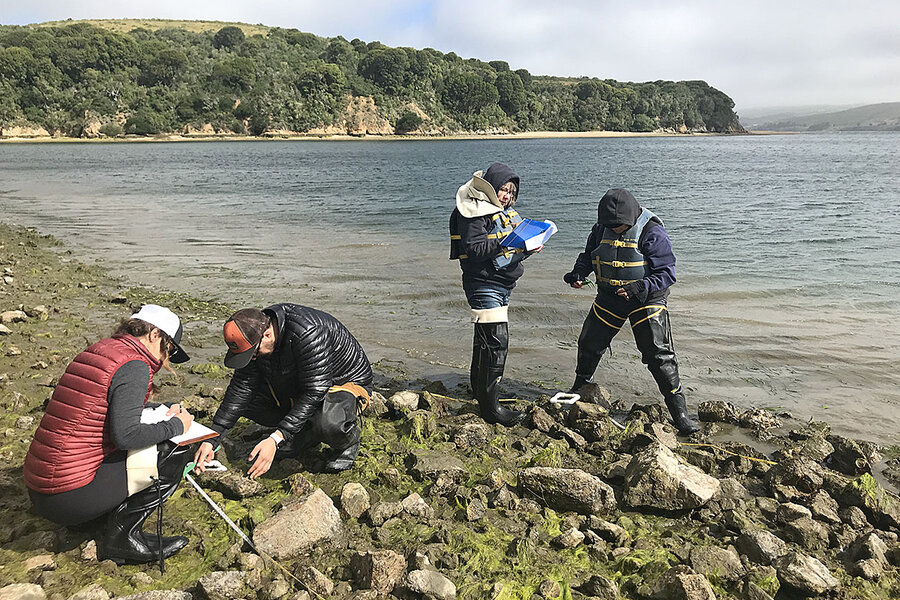
Volunteers monitor native oyster populations at Hog Island Oyster Co. in California. Image: Amanda Paulson/CSM
Millions of oysters are consumed in the United States each year but these trendy bivalves are coming under increasing threat from ocean acidification resulting from climate change. Animals like shellfish, corals and sea urchins need carbonate ions to build their shells and other structures yet the more oceans acidify, the scarcer those essential building blocks become. But some oyster farmers, like at California’s Hog Island Oyster Co., are fighting back and working with scientists to better understand the effects of ocean acidification on oysters and how they can adapt and stay resilient.
A Growing Problem: Hog Island founding partner Terry Sawyer said that he started to witness the problem of ocean acidification about a decade ago but didn’t recognize what was happening. As the Christian Science Monitor explained, at this point, the average pH of the surface ocean has dropped by 0.1 pH units since preindustrial times, amounting to about a 28% increase in the acidity of the oceans overall, (as according to Richard Feely, a senior scientist at the Pacific Marine Environmental Laboratory at NOAA).
Not Everyone’s Affected Equally: CSM explained that the change in ocean pH is distributed unevenly geographically, with more of the pH changes seen farther away from the equator. On the Pacific coast of the United States, meanwhile, the changes are most acute because the decreasing of the pH at the surface is combined with upwelling of carbon dioxide-rich waters from below.
- For Hog Island this has meant making changes like investing in an oyster hatchery (over buying baby oysters), and experimenting with different varieties of oysters that are more resistant to acidification as well as creating natural buffering solutions, like growing edible seaweed along with the oysters
By The Numbers: Oysters are the top marine aquaculture species and accounted for $173 million of production in 2015. But looking more broadly, there are millions of American jobs that are tied to aquaculture and the health of our oceans. For now, oyster farmers are able to manage the impact that climate change is having on oysters but if ocean waters continue to warm and acidify this may become far more challenging if not impossible.
Why This Matters: This research is helping oyster farmers to better understand the threats they face as a result of climate change as well as where they should place future farms. Not only do oyster farms provide jobs but oysters themselves are critical in cleaning up waterways and even providing natural infrastructure to make coastlines more resilient to storms.
June 27, 2019 » climate change, ocean acidification, oysters


